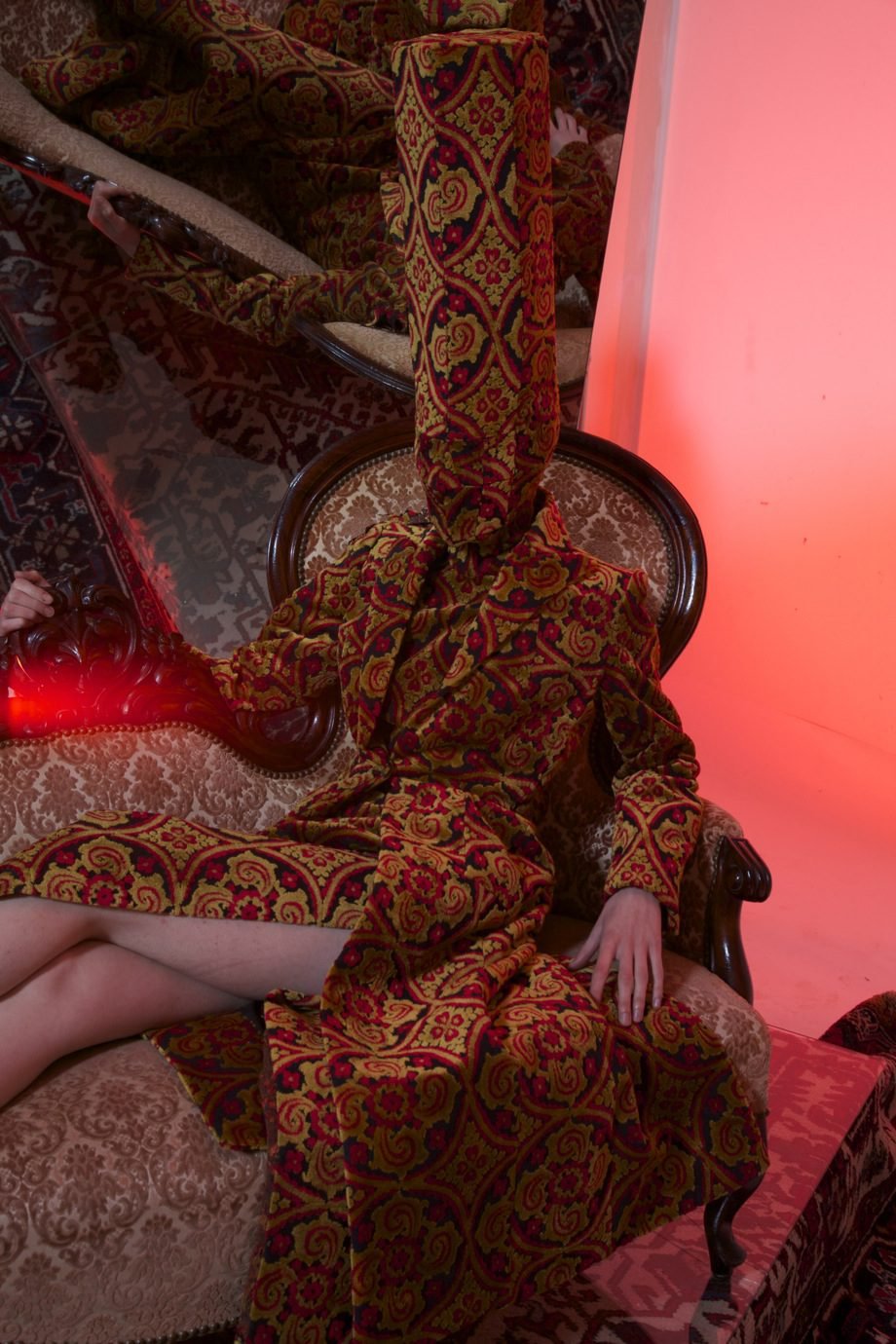Students were told about the decision to move the graduate show online two weeks into lockdown and worked towards inventing new ways to present their collections. Photographer Willy Vanderperre and stylist Olivier Rizzo collaborated with the school, creating imagery starring top models Kaia Gerber, Mica Argañaraz, and Anok Yai among others.
When the Academy approached him, Willy agreed to work with them immediately. “The masters have all been working up to that one moment, their graduation show,” says the photographer, who photographed models over FaceTime, then used collage to showcase previews of the graduate collections. “When Covid-19 cancelled that, it must have been hard for them. It is five years in the working, all up to that one moment, your final collection as a student.”
“I also have a connection with the school as I studied and met my partner there,” Willy continues. “It felt right to give them support. The masters are the future of our industry that has been hit very hard by the virus. It felt like giving something back to the fashion community, the school, and a push for the designers of tomorrow. Everybody involved in the project shared the same enthusiasm. It was a beautiful, heartfelt, non-profit project. We didn’t want to sell anything. We just wanted to express and give back to the community that we are part of.”
Florentina Leitner, one of the nine Royal Academy MA graduates, was months away from presenting her final collection at the yearly graduate show when Europe went into lockdown. “In the beginning, I was very sad about the fact that we won’t have an offline show with an audience,” says Florentina. “But after some time I tried to make the best of the situation and in the end, such a new experience can be very exciting. It’s great to be part of the first digital show.”
Digital shows are quickly becoming part of fashion’s ‘new normal.’ Though we have been aware for years of how damaging traditional fashion weeks are to the environment, not to mention the pressure such a fast-paced fashion cycle puts on designers, it’s taken a global health crisis to force us to start rethinking this system. However, these are all the issues that young designers were already contemplating often, even before the pandemic. Like most of this year’s graduates, Julia Ballardt thinks that “Fashion is quite old fashioned today. When can be a better time to start re-thinking it, when so many hit rock bottom and the reset button has been pushed?” Willy Vanderperre agrees, even going as far as saying that, “This moment might actually be referred to later in history books as the turn of the century, the start of the 21st century. The concept of time has and will change the way we approach things. Times will change. It might be a turning point.”
What is the best way to present a show digitally? There is no one size fits all answer. The presentations have become as unique and personal as the clothes themselves. At a time when the industry is manically trying to adapt physical experiences into the digital, it is easy to revisit already existing 2D formats hoping that it will give justice to the designs. We can get lost into the practical aspect of the digital, putting all our efforts into building online spaces for more “user-friendly” experiences, even if the best shows or events we have been to, were not the ones that we sat the most comfortable at, but the ones that made us feel something.
Florentina fully immersed herself in the digital, working with Amsterdam-based digital artist Geoffrey Lillemon. “I scanned all the looks with my iPad in my living room and then with collages we created the surroundings of the silhouettes,” Florentina explains. “It was a new way of working for me and I enjoyed trying something I wouldn’t have tried without the COVID-19 situation. Working with Geoffrey on the 3D presentation gave me a small insight but I would love to master more of it myself, as I think it is a more and more important skill that people require.”
Julia went down a different route but was excited by the project from the start. “The day after the announcement [that the show would be digital] I was already up on my bike, cycling around town with my eyes wide open for new input,” she says. With permission from Antwerp’s Middelheim Museum, Julia replaced the models that she would have had in a traditional show with sculptures, creating a series of striking series of images, including close-up details of the garments. “It was not so much preparing, but more inventing,” muses Julia. In daring to envisage a different, better future for fashion, the Class of 2020 are constantly inventing, hoping, dreaming. The Royal Academy of Antwerp students reminded us that the ideas and creativity are more important than a website’s expensive infrastructure or the HD quality of a video. Digital fashion shows and platforms like WWWSHOWW will undoubtedly play a role in that future and young designers who graduated during the pandemic might be the best equipped to take part in it.

















